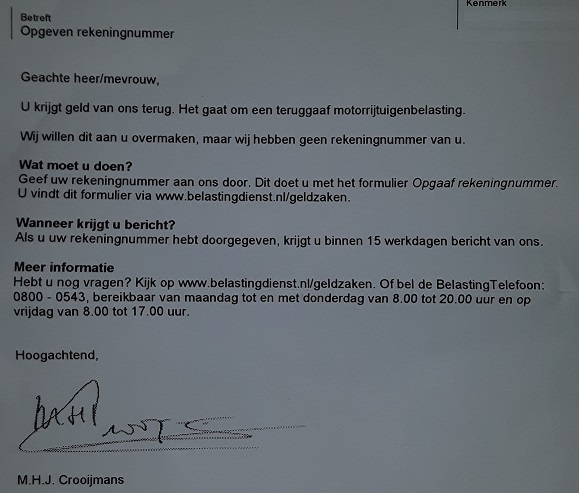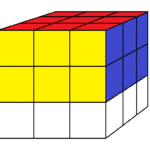 As previously explained, this method of solving Rubik’s Cube starts with solving a single face and its edges. The end result of that first step is a single face with all the blocks matching the middle tile’s color, and the other sides of all the blocks on that face matching the colors of the middle tiles in the side faces.
As previously explained, this method of solving Rubik’s Cube starts with solving a single face and its edges. The end result of that first step is a single face with all the blocks matching the middle tile’s color, and the other sides of all the blocks on that face matching the colors of the middle tiles in the side faces.
Next step is solving the edge blocks in the middle layer (the layer below the face you’ve just solved). This is simply a matter of manoeuvering the four edge blocks to their correct positions and orientations, one at a time.
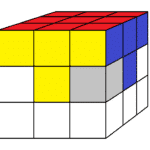 Orient the cube so that the location of the edge block you want to solve is facing front-and-right. (In this example, the location between the yellow and blue middle faces.)
Orient the cube so that the location of the edge block you want to solve is facing front-and-right. (In this example, the location between the yellow and blue middle faces.)- Find the edge block that should go in that location. For instance, in this example, find the yellow-blue edge block that should go between the yellow and blue middle tiles.
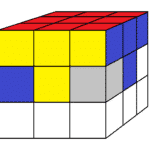 If the edge block you need is already in the middle layer, but in the wrong location, orient the cube so that the block is front-and-right, and twist either of the two below sequences to get it out of there. Then proceed from step 1.
If the edge block you need is already in the middle layer, but in the wrong location, orient the cube so that the block is front-and-right, and twist either of the two below sequences to get it out of there. Then proceed from step 1.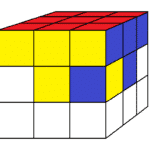 If the edge block you need is already in place, but flipped (yellow side on the blue face, blue side on the yellow face), twist either of the below sequences 6 or 7 to get it out of its place, and proceed from step 2.
If the edge block you need is already in place, but flipped (yellow side on the blue face, blue side on the yellow face), twist either of the below sequences 6 or 7 to get it out of its place, and proceed from step 2.- If the edge block you need is in the bottom layer, good! One of its colors will be facing down, the other to the side. Twist the bottom layer to align the side-facing color with the corresponding middle tile. Then twist either 6 or 7, depending on where it aligns.
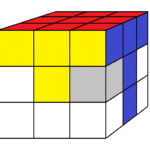 If the color aligns with the right face, twist this sequence to get it in place:
If the color aligns with the right face, twist this sequence to get it in place:
D+ F+ D- F- D- R- D+ R+
This should bring the edge block into place, oriented correctly to match the side colors.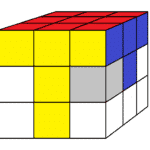 If the color aligns with the front face, twist this sequence instead:
If the color aligns with the front face, twist this sequence instead:
D- R- D+ R+ D+ F+ D- F-
(This is the same sequence as 6, but mirrored along the edge where the edge block goes.) Repeat these steps for the other three edge blocks that go in the middle layer.
Repeat these steps for the other three edge blocks that go in the middle layer.
The end result should be a cube with the top two layers solved, and the bottom layer still a mess. To fix this mess, proceed to the final layer.

